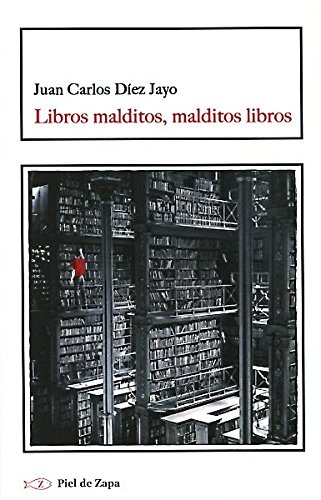
Review of the book “Cursed Books, Cursed Books” by Juan Carlos Díez Jayo.
“Cursed Books, Damned Books” is a literary essay written by Juan Carlos Díez Jayo that invites us to immerse ourselves in the history of some of the most controversial and polemical books in literature, those that have been censored, banned or marginalized for different reasons throughout the centuries.
What do the Necronomicon, the Book of St. Cyprian, and the Voynich Manuscript have in common? They are all examples of cursed books, that is, books that are attributed to supernatural, mysterious, or evil powers, and that have generated fascination, fear, and controversy throughout history. In this article, we will explore the concept of a cursed book and some of the most emblematic cases that have aroused the curiosity of readers, writers, and scholars.
The term cursed book can have several meanings, depending on the context and perspective. One of them is that of a book banned or censored by some religious, political or moral authority, which considers its content to be dangerous, heretical or subversive. Thus, for example, the Catholic Church created the Index Librorum Prohibitorum, a list of works banned from the faithful from the 16th to the 20th century. Among the authors included in this index are Galileo, Voltaire, Rousseau, Kant and Darwin, among many others.
Another meaning of cursed book is that of a book containing hidden or arcane knowledge, related to magic, alchemy, astrology or necromancy. These books are supposed to reveal secrets for invoking spirits, performing spells or manipulating the forces of nature. Some of these books are attributed to legendary or fictional authors, such as King Solomon, the prophet Enoch or the mad Arab Abdul Alhazred. Others are based on popular or folkloric traditions, such as the Book of Saint Cyprian, a Spanish grimoire that collects spells and rituals for various purposes.
Finally, there is a third meaning of cursed book, which refers to those books that have a strange or turbulent history, involving disappearances, theft, forgery or murder. These books are often surrounded by legends and myths that give them an aura of mystery and danger. An example of this type of book is the Voynich Manuscript, an illustrated codex from the 15th century that no one has been able to decipher to date. Another is the Codex Gigas, a huge medieval volume containing an image of the devil that according to tradition was written by a possessed monk.
As we can see, cursed books are a heterogeneous and fascinating category that tells us about the relationship between human beings and knowledge. Cursed books are an expression of our curiosity about the unknown, but also of our fear of the incomprehensible. Cursed books are an invitation to read between the lines, but also a challenge to our reason and our faith. Cursed books are a source of inspiration for literature and art, but also an object of study for history and science.
If you want to know more about this fascinating topic, we recommend the book Libros malditos, malditos libros, by Juan Carlos Díez Jayo. In this work you will find a tour of the main examples of cursed books in Western culture, from ancient times to the present day. The author analyzes the characteristics, origins and repercussions of these books in their historical and cultural context. In addition, he offers a critical reflection on the very concept of a cursed book and its relevance today. An essential book for lovers of books and mysteries.
The author takes us on a journey through time and presents us with literary works that have been criticized and persecuted for various reasons: for their explicit sexual content, for their political ideology, for their criticism of religion, for their provocative style, among others. others. From the 15th century to the present, Díez Jayo explores the reasons behind censorship and how these “cursed” books have been treated by society at different historical moments.
The book is divided into two parts: in the first, the author presents a brief historical introduction on censorship and book banning, followed by a selection of works that have been censored or banned throughout history. In the second part, the author delves into some of these books, analyzing their content and the context in which they were written, as well as the reactions they provoked in society at the time.
Díez Jayo carries out an exhaustive and detailed work in the compilation of information about each book. Through clear and pleasant language, the author brings us closer to the reasons why these books were labeled as “cursed”, and how in some cases, this label has given them even more notoriety.
The author shows us that many of these books have been misinterpreted and that their literary and cultural value has been overshadowed by the controversy they generated. Furthermore, he invites us to reflect on the importance of freedom of expression and the right of authors to write what they wish, without censorship or restrictions.
In conclusion, “Cursed Books, Cursed Books” is an interesting and well-documented essay that offers us a historical tour of some of the most controversial and polemical books in literature. It is a work that invites us to reflect on the importance of freedom of expression and the need to protect it in our society. Without a doubt, a recommended read for those interested in the history of literature and censorship.
Source: https://algunoslibrosbuenos.com/libros-malditos-malditos-libros


